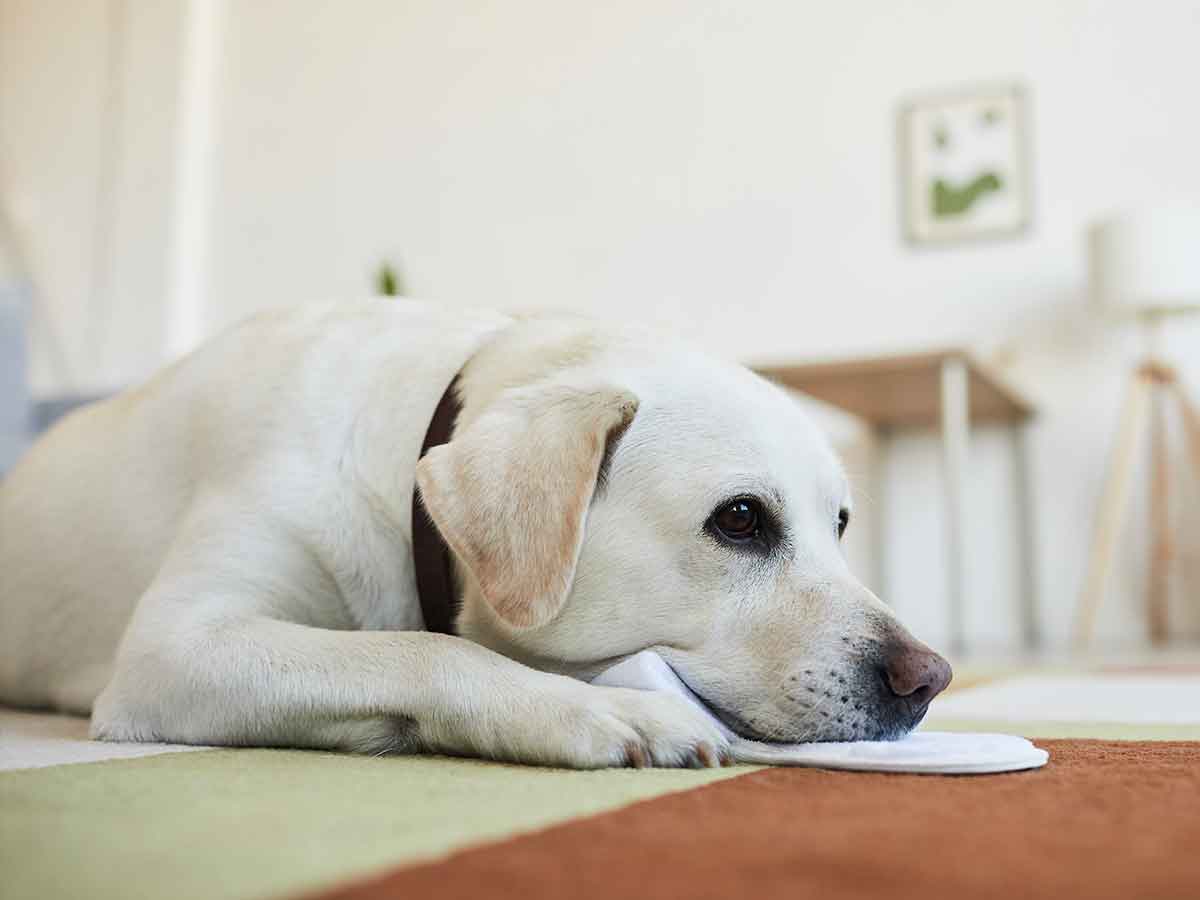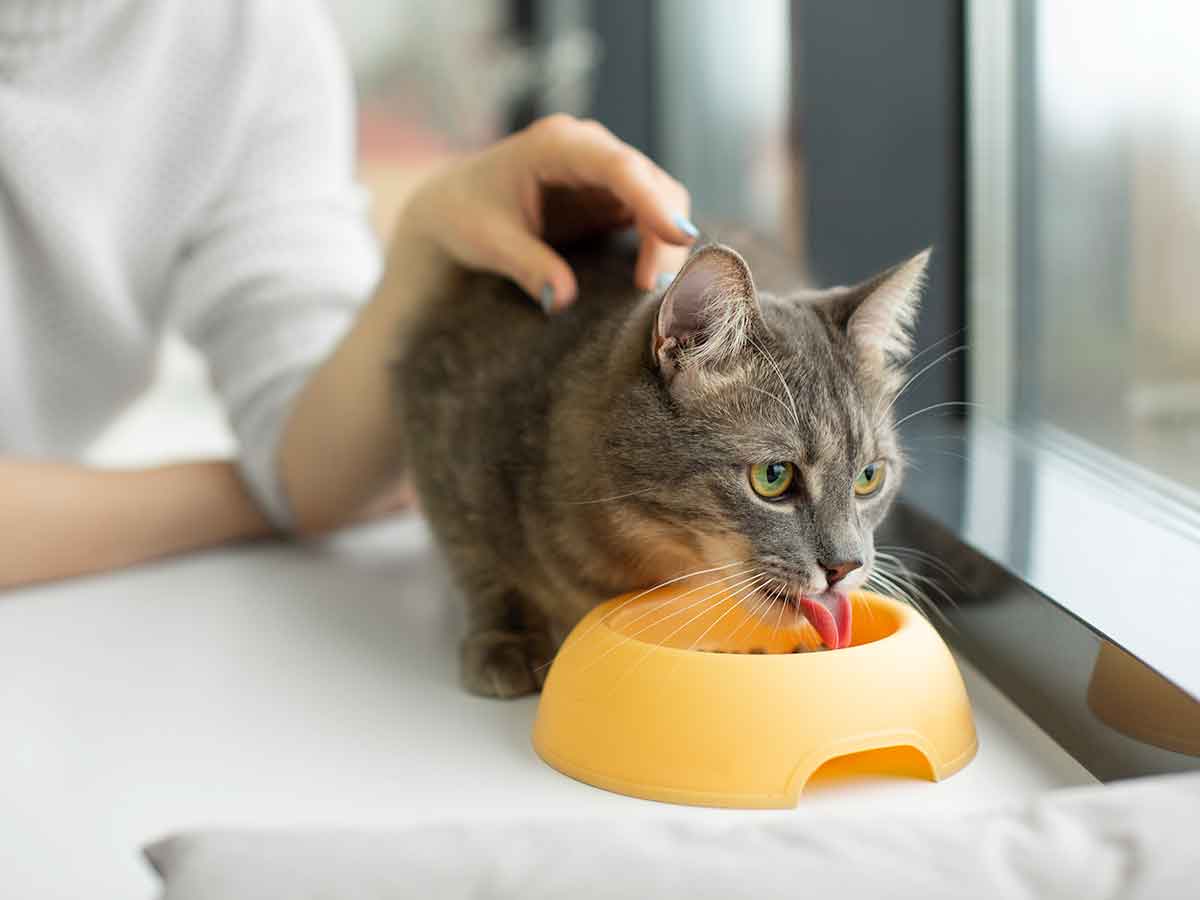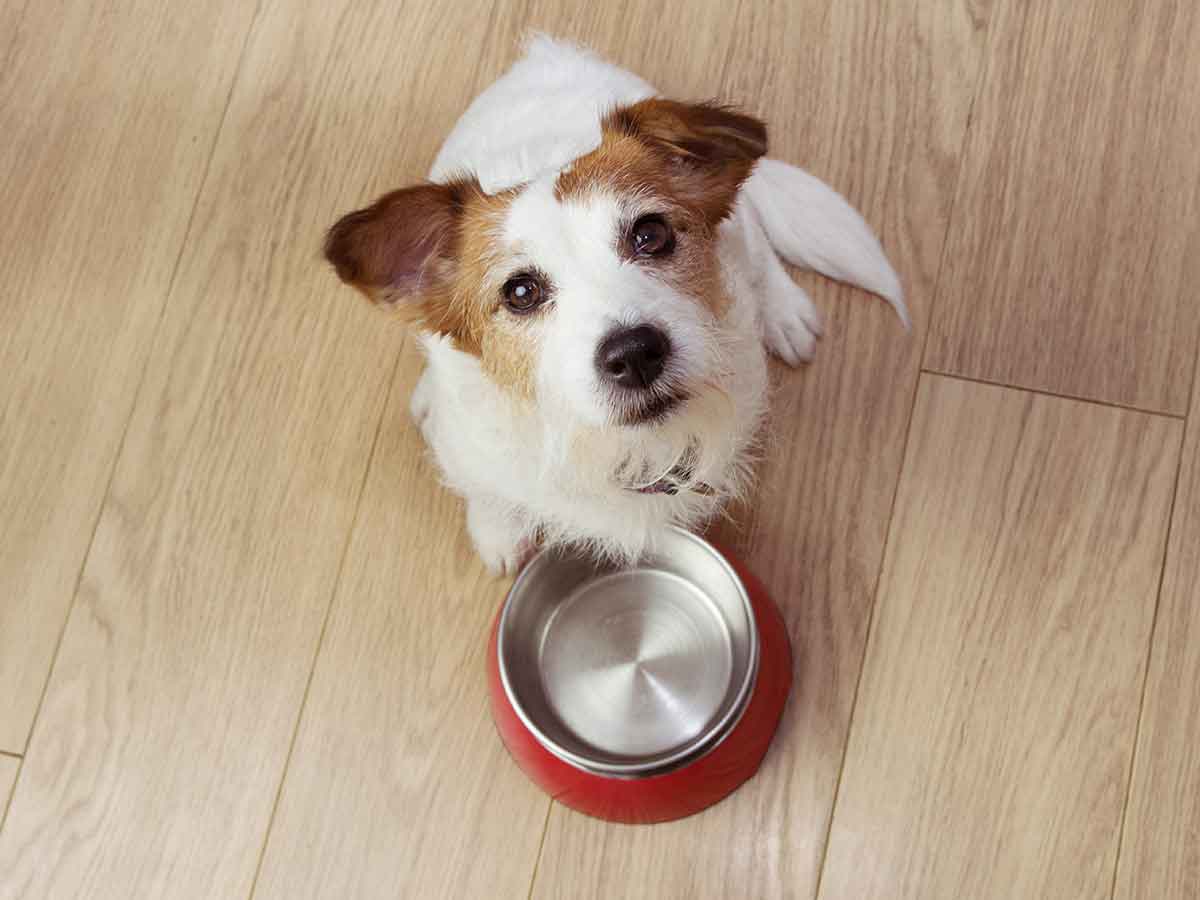Does your dog have a great appetite…for just about everything? If he’s carrying around extra pounds, it’s time to help him embark on a healthy weight loss program.
We’re so accustomed to seeing our dogs that sometimes we don’t realize when they’ve gotten chubby. To determine if your pet is carrying excess weight, it may be useful to check the AAHA Body Condition Score (BCS) chart, take a look with fresh eyes, and ask yourself:
● Has my dog’s normal body shape changed?
● Can I still see a waist curving below her ribs?
● Can I feel his ribs?
● Is her belly bulging or hanging down?
If you answered yes to any of these questions, it’s time to schedule a visit to the veterinarian.
Your veterinarian will be able to tell you what the standard weight range is for your dog’s breed or mix of breeds. Once he or she finds your dog to be in good health, it’s time to discuss your dog’s diet. Ask about the proper amount of dog food you should provide daily. Your veterinarian might suggest changing the menu to a lighter formula that provides an optimum balance of nutrition and energy.1
A dog’s weight loss program is the same as a human’s: eat sensibly and increase daily exercise.
Healthy eating
Keep a record of everything your dog eats for a week – you may realize that it’s more than just the breakfast and dinner that you feed. Include table scraps. And if there’s a toy stuffed with peanut butter that she plays with when you leave the house, that counts too.
Giving special treats, like rewarding him with a bone every time he comes in from a walk, adds up. Calorie-wise, giving a dog an in-between-meals snack is like giving a person candy. A small piece may not hurt, but several a day will have an impact. (Note: dogs should never be fed chocolate or sugary treats).
Healthy dog treats, including raw veggies, make good dog snacks. Try different crunchy foods, such as cauliflower, broccoli, green beans, celery, and especially carrots. Some people foods, such as onions or raw potatoes, aren’t safe for dogs, so discuss healthy snacks with your veterinarian.2
You can also break treats in half or remove a handful of kibble from your dog’s measured meal and dole pieces out over the course of the day.
Staying active
A daily exercise routine can also help your dog lose weight and can be as simple as tossing a ball or taking walks. Gradually extend the length of your activity time.3
Or try a new activity, such as the canine sport of agility, where both owner and dog try to complete an obstacle course within a time limit. Your dog will look forward to training sessions, which invariably include fun, laughter, and hugs.
When winter weather keeps both of you indoors, invent ways to keep your dog healthy and in great shape. Toss a softball or a favorite toy down a hallway or even up and down a set of stairs.
And remember, the best treat of all is a scratch behind the ears from the person she adores, which is not a single calorie!
References:
1. 2021 AAHA Nutrition and Weight Management Guidelines for Dogs and Cats. American Animal Hospital Association. https://www.aaha.org/globalassets/02-guidelines/2021-nutrition-and-weight-management/resourcepdfs/new-2021-aaha-nutrition-and-weight-management-guidelines-with-ref.pdf
2. Plants and food that can be poisonous to pets. The Humane Society of the United States. https://www.humanesociety.org/resources/plants-and-food-can-be-poisonous-pets
3. Dog walking – the health benefits. Better Health Channel. https://www.betterhealth.vic.gov.au/health/healthyliving/dog-walking-the-health-benefits
Want to share this article?
More like this
Nutrition in diabetic pets
Is your pet diabetic? Make sure you’re maintaining a nutritious diet to keep him happy and healthy.
What to feed fluffy? Dry or wet? Both?
Every cat is different when it comes to wet or dry food. Find out which one is best for you.
What you should and shouldn’t feed your dog
Can people food be ok for pets? Sometimes – but you need to know the rules





 Austria
Austria Belgium
Belgium Czech Republic
Czech Republic Denmark
Denmark Europe
Europe Finland
Finland France
France Germany
Germany Greece
Greece Hungary
Hungary Ireland
Ireland Israel
Israel Italy
Italy Netherlands
Netherlands Norway
Norway Poland
Poland Portugal
Portugal Romania
Romania Spain
Spain Sweden
Sweden Turkey
Turkey United Kingdom
United Kingdom United States
United States